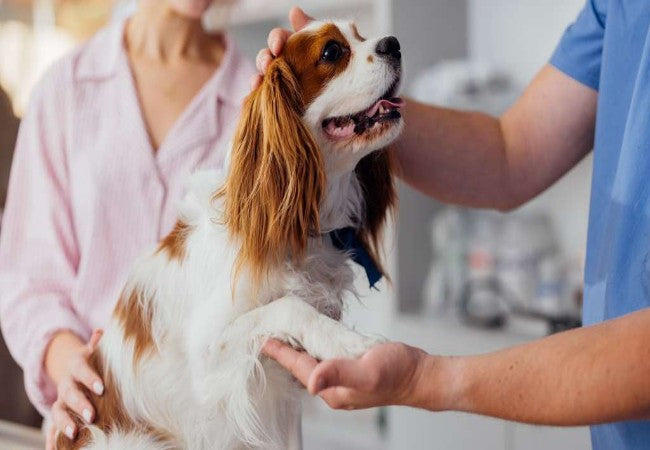A Vet’s Guide to Should I Desex My Dog? Risks, Benefits & Timing in 2025 🐾

In this article
A Vet’s Guide to Should I Desex My Dog? Risks, Benefits & Timing in 2025 🐾
By Dr. Duncan Houston BVSc
Hello! I’m Dr Duncan Houston BVSc, veterinarian and founder of Ask A Vet. Desexing—also called spaying or neutering—is a common and important decision for dog owners. It can prevent unwanted litters and reduce hormone-driven issues, but it may also increase certain health and behavior risks depending on your dog’s breed, sex, and age at surgery. In this comprehensive, **vet‑approved guide**, we’ll explore:
- ✅ Potential health & behavioral benefits
- ⚠️ Possible risks & breed-specific concerns
- ⏳ Best timing based on sex, breed, and size
- 🌿 Hormone-sparing alternatives
- 🛠️ Support tools: Ask A Vet,
- 🩺 Personalized planning for 2025 and beyond
1. What Desexing Means & Why It’s Common
Desexing surgically removes reproductive organs—testicles in males (neutering) and ovaries/uterus in females (spaying). The result is permanent sterilization and modification of sex-hormone levels. In regions like North America, over 80% of pet dogs are desexed by adulthood.
2. Health Benefits of Desexing
- 🚫 Prevents uterine infections (pyometra), testicular, ovarian, and uterine cancers
- 🐾 Lowers risk of mammary tumors if spayed before first heat
- ✅ Reduces risks of benign prostate hyperplasia in males
- 🔥 Decreases unwanted mating and associated behaviors
3. Behavioral Benefits
- ⬇️ Less roaming, mate-seeking, and marking in many dogs
- 🐶 Reduced mounting and humping behavior
- ⚠️ Up to 70% of cases show no change in aggression; some may increase in fear or noise sensitivity
4. Health & Behavior Risks
- ⚖️ Increased risk of obesity, urinary incontinence, certain cancers, and joint disorders—especially in early desexing
- ⚠️ Higher incidence of orthopedic problems and cancers (e.g., osteosarcoma, hemangiosarcoma) in large breeds
- 🧠 Some desexed females show more fear or anxiety-related behaviors
5. Timing Is Everything 🕒
- Early desexing (<6 months): Reduces unwanted litters but may increase joint/behavioral risks
- Traditional (6–12 months): Balanced approach—lowers reproductive disease while preserving development
- Late desexing (>12 months): Preserves hormones longer—beneficial for joint health in large breeds, but carries breeding risks
6. Breed & Sex Matters
- Small breeds: Generally handle early desexing well.
- Large/giant breeds: Often benefit from delayed desexing to reduce hip and ligament issues
- Females: Spaying before first heat dramatically reduces mammary cancer but may increase urinary incontinence if too early
- Males: Desexing reduces prostate disease—but may slightly raise certain urinary cancers
7. Hormone‑Sparing Alternatives
If you want sterilization without hormonal loss, discuss options such as vasectomy or ovary-sparing spay with your vet. These preserve hormone levels while preventing pregnancy.
8. How to Decide—Personalized Approach
- ✅ Identify your goals: behavior control, health protection, breeding, lifestyle.
- 🏥 Assess dog-specific factors: breed, size, activity, temperament.
- 📅 Choose timing: traditional (6–12 months) suits most; delay for large breeds.
- 🌿 Explore alternatives like hormone-sparing surgery.
- 🔧 Plan post-op care: weight control, joint supplements, behavior monitoring.
- 📲 Use Ask A Vet for telehealth advice on timing, surgery choice, and follow-up.
9. Supporting Tools & Recovery
- Ask A Vet App: Offers checklists, telehealth follow-up, and behavior adjustments after desexing.
10. Vet Case Study
Case: Zara, a 9‑month‑old Mastiff
Desexing was delayed until age 12 months to allow joint development. Post-surgery care included joint supplements and gentle activity. Using Ask A Vet follow-ups, behavior remained stable, and she didn't become overweight. Zara later competed in conformation with excellent health. A hormone-sparing option may be considered for future pets.
11. FAQs
-
Will desexing stop aggression?
Maybe—in hormone-driven aggression, castration helps ~25–30% of cases; but training is essential. -
Do I have to wait for the first heat?
No—early spay reduces cancer risk, but consult your vet about orthopedic and incontinence risks. -
Will my dog gain weight?
Potentially—monitor intake and activity to keep them fit.
📌 Final Thoughts from a Vet
Desexing is a valuable tool—but not one-size-fits-all. Ask A Vet recommends personalized decisions based on your dog’s breed, sex, health, and your goals. Optimal timing balances reproductive benefits with long-term health. Supporting your dog through recovery with enrichment and telehealth ensures the best outcome. With careful planning, desexing can be a safe, beneficial choice for your companion in 2025. 🐾❤️






